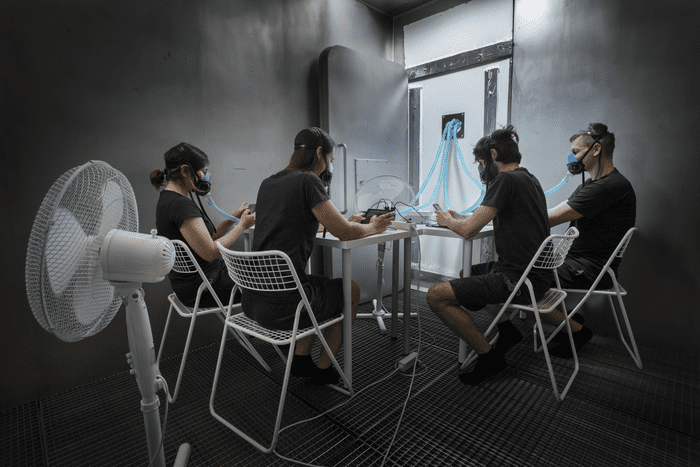Human bodies are stalked by their own haze of chemical emissions that changes indoor air chemistry, as shown by a new study. While we might be totally unaware of this invisible companion, the researchers believe the “oxidation field” produced by our skin may have an impact on indoor air quality and even human health.
It’s all to do with oxidation, a process in which a chemical substance changes because of the addition of oxygen. Outdoors, certain chemicals are scrubbed from the air by rain and through chemical oxidation by hydroxyl (OH) radicals, which are created by ultraviolet sunlight interacting with ozone and water vapor.
Indoors, sunlight and rain aren’t as big of an issue, so it was previously assumed that indoor environments don’t have high levels of OH radicals.
However, a new study reported in the journal Science has found this is not the case: high levels of OH radicals can be generated indoors and it’s generated by humans interacting with ozone gas in the air.
“The discovery that we humans are not only a source of reactive chemicals, but we are also able to transform these chemicals ourselves was very surprising to us,” Nora Zannoni, first author of the study and at the Institute of Atmospheric Sciences and Climate in Bologna, said in a statement.
Human guinea pigs during the experiment in a climate controlled chamber. Image credit: Mikal Schlosser, TU Denmark
“The strength and shape of the oxidation field is determined by how much ozone is present, where it infiltrates, and how the ventilation of the indoor space is configured,” adds Zannoni. The levels the scientists found were even comparable to outside daytime OH concentrations levels.
More particularly, the oxidation field that surrounds us is generated by the reaction of ozone with oils and fats that our skin hydrated, like unsaturated triterpene squalene.
To discover this, an interdisciplinary team of engineers and chemists gathered four people in a climate-controlled chamber that was pumped with levels of ozone you’d find at higher indoor levels. The team worked out the room’s OH values before and during the time the people were inside, then created a fluid dynamics computer model to understand what was going on.
“Our modeling team is the first and currently the only group that can integrate chemical processes between skin and indoor air, from molecular scales to room scales,” added Manabu Shiraiwa, a professor at UC Irvine who led the modeling part of the new work. “The model makes sense of the measurements – why OH is generated from the reaction with skin.”
Of course, the average human spends approximately 90 percent of their life inside, so this build up of radicals isn’t not going to be anything for most people to worry about. However, the researchers note that the oxidation processes can also pump out respiratory irritants such as 4-oxopentanal (4-OPA), which cause problems for children and people with weakened immune systems.
As the COVID-19 pandemic taught us, indoor air quality is something that’s been largely ignored in the past. The researchers conclude their paper by saying that their findings show the need for further research looking into the human health implications of these radicals.
Equally, further work is needed to understand how temperature, moisture, and skin exposure may influence the generation of OH radicals.
Source Link: Human Skin Creates A Haze Of Chemical Emissions In Indoor Air
